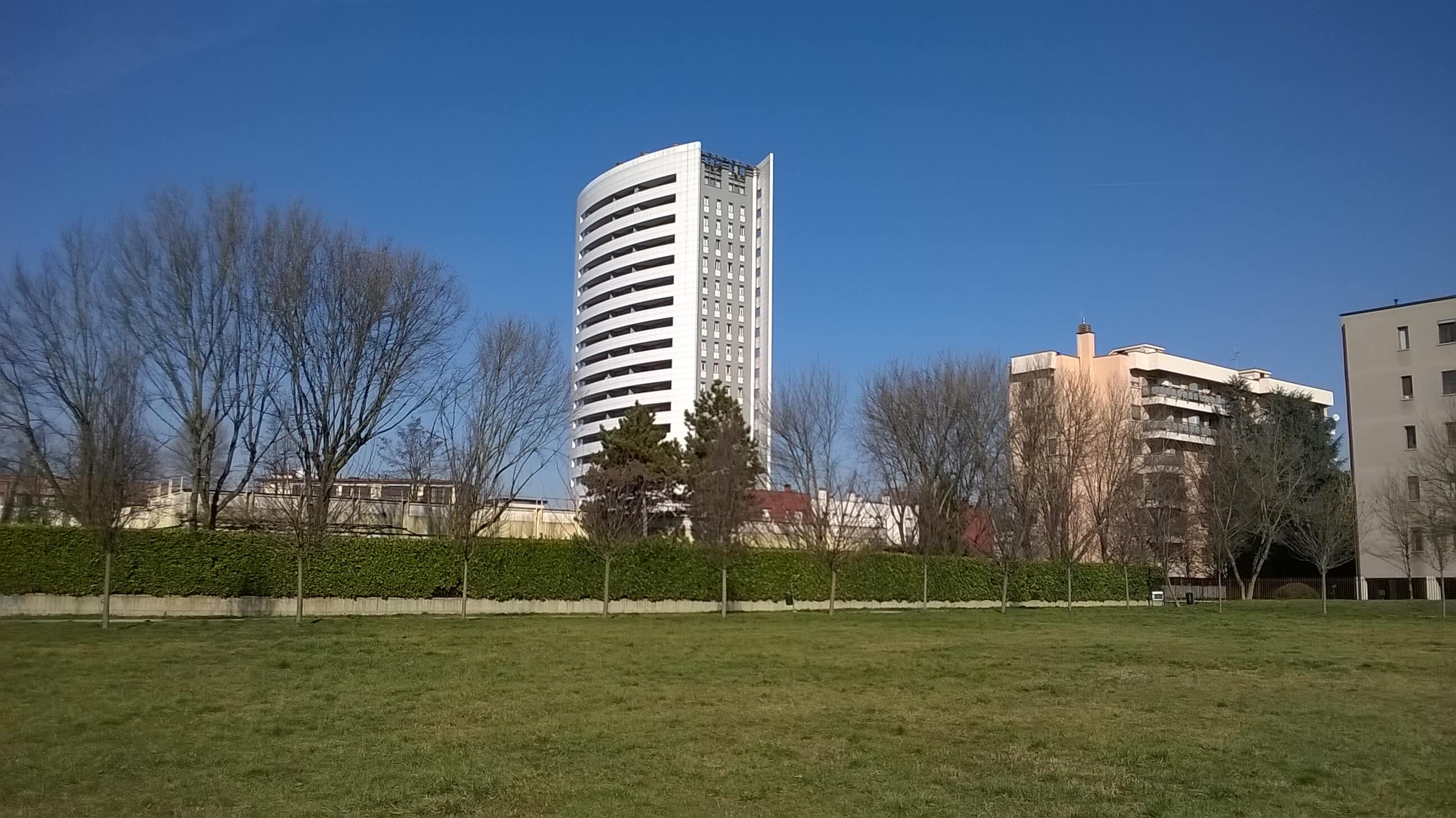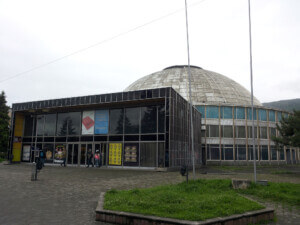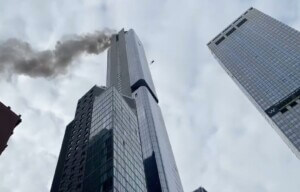Editor’s note 9/16/2021: 3A Composites has released a statement clarifying that the company’s trademarked Aluminum Composite Material (ACM), ALUCOBOND, was not used in the construction of Torre dei Moro in Milan. This contradicts initial Italian media reports on the August 29 fire at the tower. Reads the statement:
“The ACM material used at Torre dei Moro in Milan was most probably an ACM with PE core (Polyethylene) which is classified class D-E according to EN 13501-1 and is not as reported by the media fire retardant or non-combustible.
3A Composites as a responsible manufacturer is aware of the fundamental role, which building materials are playing with regard to safety, and therefore supports and endorses clear and stringent regulations with regard to fire protection and fire safety. We have developed comprehensive information and training material on how to build safe facades with Aluminium Composite Materials and invite you to consult our brochure and video.”
While the exact cause of the August 29 fire that ravaged Torre dei Moro, a 20-story apartment tower in the semi-rural southern suburbs of Milan, has yet to be determined, officials already have identified a culprit as to why the inferno spread so rapidly: combustible external cladding.
Residents in the building were swiftly rescued and no serious injuries were reported and no lives were lost (save for pets), but the massive blaze was unsettlingly reminiscent of the 2017 Grenfell Tower fire in West London in both its ferocity and the accelerated manner in which the flames spread, as gaps between the structure and exterior cladding created a chimney effect that effectively transformed the decade-old high-rise into a 200-foot-tall torch. Seventy-two people died while scores more were injured in the Grenfell Tower inferno, which was the worst residential fire in the United Kingdom since World War II. The official inquiry into the Grenfell tragedy, now in its second phase, is ongoing.
“What seems already clear from the start is that the external cladding of the building went up in flames far too quickly, in a dynamic that recalls the Grenfell Tower in London,” Milan Mayor Giuseppe “Beppe” Sala said in a statement shared by the Associated Press.
“I have never seen a situation like this,” added fire brigade chief Giuliano Santagata. ”Just look at the facade and you see that everything is completely burned, and therefore presume that it was made of flammable material.”
As Angelo Lucchini, a professor of technical architecture at the Polytechnic University of Milan, explained to the AP, Italy drafted new rules regarding building cladding in the wake of the Grenfell fire. Those rules, however, have yet to be formally adopted. The Italian cladding rules don’t prohibit a specific cladding product but do detail how to “prevent the spreading of the flames along the facade,” per the AP.
Augusto Bononi, the administrator of Torre dei Moro, told Italian news outlet TGCOM24 that the building facade was clad in Alucobond, an aluminum sheet-based material. [See editor’s note above.]

An exact cause of the fire has not been identified although investigators believe it started on Torro dei Moro’s 15th floor. First responders from Vigili del Fuoco, Italy’s national fire and rescue service, have been heralded for their quick response and evacuation efforts, which was carried out while the blaze was still contained to one area and hadn’t yet spread up and down to the tower’s exterior. Once the fire moved to the exterior, the entire 20-story structure was completely engulfed by flames within 15 minutes.
Following investigations, the charred remains of the tower could be potentially demolished.
Anchoring a larger redevelopment area in Milan’s Vigentino district, the ship-evoking Torre dei Morro complex, which also includes retail and restaurant, is located on Via Antonini near the OMA-designed Milan campus of Fondazione Prada. Home to largely well-heeled residents, the complex is owned by Milan-based real estate development giant Polo srl.
“The judiciary is already working to clarify the dynamics of the incident. My hope is that responsibility will be established quickly,” added Sala following the blaze. “The Torre dei Moro was built just over 10 years ago and it is unacceptable that such a modern building should have proved totally vulnerable.”











